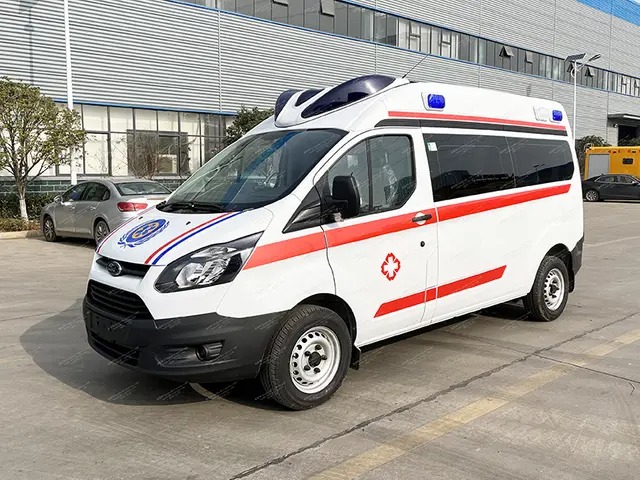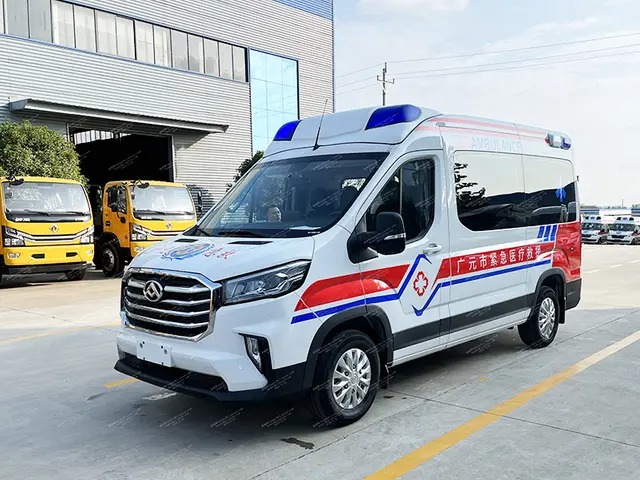


History and Evolution of Rescue Ambulances
Views: 179 Author: Site Editor Publish Time: 2025-09-27 Origin: Site









Introduction
The concept of the rescue ambulance is deeply tied to humanity’s efforts to save lives during emergencies. From rudimentary carts used on battlefields centuries ago to today’s high-tech mobile medical units, rescue ambulances have undergone a fascinating transformation. Understanding their history is not just about exploring old vehicles—it is about tracing the evolution of medical care, emergency response systems, and society’s commitment to protecting life in moments of crisis.
Early Beginnings: Battlefield Origins of the Rescue Ambulance
The earliest recorded rescue ambulances can be traced back to military contexts. Ancient armies realized that transporting wounded soldiers quickly increased survival rates. For instance, in the 11th century, the Knights of St. John developed rudimentary horse-drawn carts for battlefield rescues. Later, during the Napoleonic Wars in the 18th century, Baron Dominique Jean Larrey introduced the “flying ambulance,” horse-drawn wagons specifically designed to transport injured soldiers from the frontlines.
These innovations marked a turning point: instead of leaving the injured behind, systems emerged to retrieve and provide immediate care. Though primitive by today’s standards, they laid the foundation for what would eventually evolve into civilian rescue ambulances.
The 19th Century Shift: From Military to Civilian Use
By the mid-19th century, the concept of the rescue ambulance began migrating from battlefields to cities. Rapid industrialization led to more accidents in factories, while urbanization created public health challenges. In 1865, Cincinnati, Ohio, introduced the first civilian horse-drawn ambulance service in the United States. Soon after, London and other major cities followed.
Unlike military wagons, these early civilian ambulances were staffed by attendants trained in basic first aid. They carried simple medical tools, stretchers, and sometimes even morphine for pain relief. The transition highlighted an important evolution: rescue ambulances were no longer only for soldiers, but for ordinary citizens who fell victim to accidents, disease outbreaks, or urban crises.

Motorized Rescue Ambulances: The Early 20th Century Revolution
The invention of the automobile transformed rescue ambulance design and efficiency. By the early 1900s, horse-drawn wagons were being replaced with motorized ambulances, significantly reducing response times.
For example, the first motor-powered rescue ambulance was introduced in Chicago in 1899, built by the Electric Vehicle Company. It was equipped with space for stretchers and limited supplies. The mass adoption of cars in the 1920s and 1930s made rescue ambulances faster, more reliable, and more capable of reaching remote areas.
Hospitals, police departments, and even funeral homes began operating their own ambulances. Although standards varied widely, the motorized ambulance created the blueprint for modern emergency vehicles.
World Wars and Medical Advancements
The two World Wars profoundly accelerated the development of the rescue ambulance. During World War I, ambulances were equipped with improved suspension systems to carry the wounded across rough terrain. Mobile surgical units also began to appear, allowing doctors to perform life-saving operations closer to the battlefield.
In World War II, ambulances became more specialized and organized into coordinated fleets. The use of radio communication allowed better dispatching, ensuring ambulances reached victims quickly. Additionally, wartime medical innovations such as blood transfusions, antibiotics, and triage methods became standard in civilian rescue ambulances after the wars.
The wars highlighted that ambulances were not merely transportation tools—they were mobile extensions of hospitals.
Standardization and the Rise of Modern Rescue Ambulance Services
By the mid-20th century, governments began regulating ambulance services to ensure consistency and quality. In the U.S., the National Highway Safety Act of 1966 was pivotal. It set requirements for vehicle standards, medical equipment, and staff training. Similar initiatives emerged in Europe and other regions.
Rescue ambulances during this era became larger, better equipped, and staffed with trained paramedics rather than just drivers or attendants. They carried defibrillators, oxygen tanks, splints, and basic surgical tools. The integration of medical training with advanced vehicles marked the birth of modern emergency medical services (EMS).
Table 1: Key Shifts in Rescue Ambulance Development (1900–1970s)
| Era | Main Features | Impact on Emergency Care |
|---|---|---|
| Early 1900s | Motorized vehicles, basic stretchers | Faster response times |
| WWI & WWII | Suspension, radios, field surgery units | Increased survival rates, better logistics |
| 1950s–1970s | Standardization, paramedic training | Higher quality and consistency of care |
The High-Tech Era: Rescue Ambulances in the Late 20th Century
From the 1980s onward, rescue ambulances evolved into sophisticated mobile clinics. Technological advancements enabled onboard cardiac monitors, advanced life support equipment, and computerized dispatch systems.
Specialized ambulances also emerged. Neonatal ambulances, air ambulances (helicopters and planes), and hazardous-material response vehicles expanded the definition of “rescue ambulance.” Cities began categorizing ambulances based on purpose—basic life support (BLS), advanced life support (ALS), or critical care transport.
This diversification meant patients received more tailored and effective emergency care, reducing mortality rates across a wide range of medical emergencies.
Digital Transformation and the 21st Century Rescue Ambulance
Today’s rescue ambulances are as much about data and connectivity as they are about transportation. Modern vehicles are equipped with GPS navigation, electronic health records, and real-time communication with hospitals. Paramedics can transmit patient vitals directly to emergency departments, allowing doctors to prepare before the patient arrives.
Electric and hybrid ambulances are emerging in response to sustainability concerns, offering quieter rides and reduced emissions. Furthermore, AI-driven dispatch systems optimize routes and reduce response times. The integration of telemedicine allows remote doctors to guide paramedics through advanced procedures, essentially extending hospital expertise into the field.
Table 2: Key Features of Modern Rescue Ambulances
| Feature | Description | Benefit |
|---|---|---|
| GPS & Digital Dispatch | Real-time tracking and optimized routing | Faster arrival times |
| Advanced Life Support Gear | Cardiac monitors, ventilators, defibrillators | Hospital-level interventions in the field |
| Telemedicine Integration | Remote doctor guidance via video and data sharing | Better decision-making and survival rates |
| Eco-friendly Designs | Hybrid/electric ambulances | Reduced emissions and improved efficiency |
Future of Rescue Ambulances: Where Innovation is Headed
Looking ahead, the rescue ambulance will continue to evolve with technology. Autonomous ambulances are being tested, potentially reducing the need for human drivers and improving efficiency in dense urban environments. Integration with smart city infrastructure could allow ambulances to communicate with traffic lights, clearing routes automatically.
Wearable devices may also play a role, transmitting a patient’s health data directly to paramedics before they even arrive. Drone ambulances, capable of reaching disaster zones or rural areas faster than ground vehicles, are already in experimental stages. The future points toward faster, smarter, and more adaptable rescue systems that blend mobility with real-time medicine.

Conclusion
The history and evolution of rescue ambulances is a story of constant adaptation to society’s changing needs. From battlefield carts to AI-driven emergency vehicles, each innovation has reflected both technological progress and humanity’s dedication to saving lives. Rescue ambulances have grown from being simple transportation tools into vital, high-tech extensions of hospitals, and their evolution is far from complete. Understanding this journey highlights the critical role they play in public safety and inspires future advancements that will further protect lives around the world.
FAQ
What was the first rescue ambulance?
The first known civilian rescue ambulance service was launched in Cincinnati, Ohio, in 1865, though military ambulances date back to the Napoleonic Wars.
How did wars influence ambulance development?
Wars accelerated ambulance evolution by introducing suspension systems, radio communications, and mobile surgical units, many of which became standard in civilian ambulances later.
What makes modern rescue ambulances different?
Modern ambulances are equipped with advanced life support gear, telemedicine, GPS systems, and eco-friendly engines, transforming them into mobile hospitals.
Are air ambulances considered rescue ambulances?
Yes, air ambulances—including helicopters and planes—are specialized forms of rescue ambulances used for rapid transport and access to remote locations.
What is the future of rescue ambulances?
Future innovations include autonomous driving, AI-powered dispatch, eco-friendly designs, and drone-based rescue systems.






